As a key tool for hole processing, reamer plays an important role in precision hole finishing in modern manufacturing. According to statistics, about 65% of the error control in precision hole processing depends on the correct selection of reamer. This article will systematically analyze the structural characteristics, processing scenarios and selection points of 14 mainstream reamers.
What is reamer machining?
Reamer machining is a kind of mechanical precision processesmethod to improve the dimension accuracy, geometry accuracy and surface smoothness of holes by usingrotary reamer to drill or drill holes. The core principle is to use the micro contact between the reamer blade and the workpiece to gradually remove excess material at a low cutting speed, and finally reach the size tolerance and position tolerance required by the hole design.
Reamers are usually made ofhigh-speed steel, hard alloy or coated cutting tools. The blade is finely sharpened and has certain cutting edges (such as bifurcation angle, bifurcation angle, bifurcation angle), which can be adapted to different materials and processing requirements. During the machining process, the reamer can be operated manually (such as hand reamer) or mounted on machine tool (such as drilling machine,CNC machine tool), especially in areas where hole machining is highly demanding, such as precision molds,aerospace components,medical devices, etc.
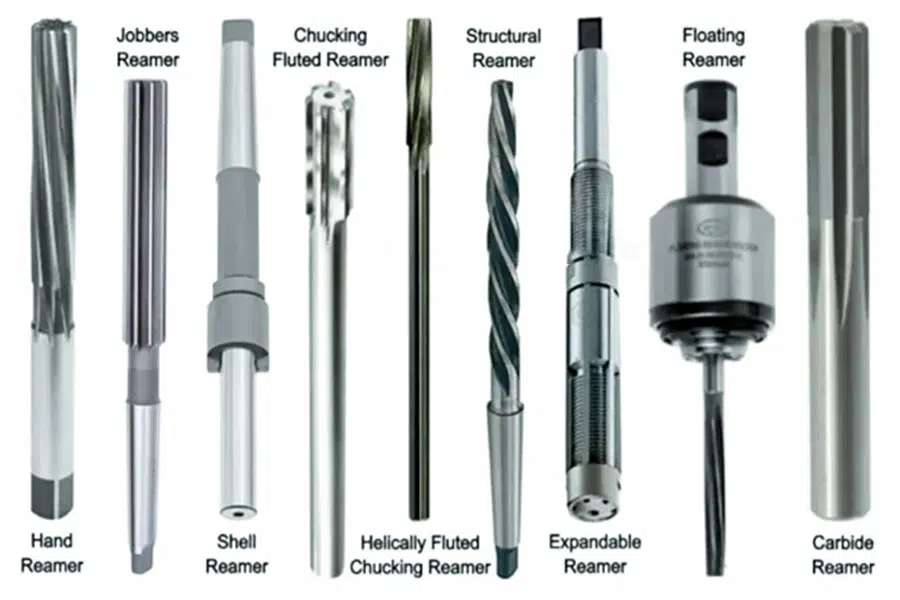
How does a reamer work?
Reaming is a finishing process, and its core principle is to remove a small amount of material through multi-edge cutting to correct the size, roundness and surface roughness of the hole.
1. Analysis of cutting process
Pre-drilling preparation: Pre-drilling or reaming is required before reaming, leaving a margin of 0.1~0.5mm (depending on the material).
Cutting method:
- Main cutting edge: remove most of the margin to form chips.
- Polishing edge: scrape the hole wall to improve the finish.
- Cutting force distribution: due to the multi-edge symmetrical design, radial forces offset each other, reduce vibration and improve processing accuracy.
2. Chip removal mechanism
- Straight groove reamer: chips are discharged along the axial direction, suitable for short hole processing.
- Spiral groove reamer: chips are discharged along the spiral groove direction, suitable for deep holes or sticky materials (such as aluminum, stainless steel).
3. Precision control mechanism
- Guiding function: The calibration part (wiping edge) of the reamer contacts the hole wall to guide the tool to maintain the correct trajectory.
- Micro-cutting: The cutting depth is small (0.05~0.3mm) to avoid deformation caused by excessive cutting force.
- Elastic deformation compensation: The reamer diameter is usually slightly smaller than the target hole diameter (0.005~0.02mm) to offset material rebound.
4. Typical processing parameters (taking steel as an example)
| Parameters | High-speed steel reamer | Carbide reamer |
|---|---|---|
| Cutting speed | 10~20m/min | 20~50m/min |
| Feed rate | 0.1~0.3mm/rev | 0.05~0.2mm/rev |
| Residue | 0.1~0.3mm | 0.05~0.2mm |
What are the structural characteristics of reamer?
The structure of the reamer directly affects its cutting performance, chip evacuation ability and machining accuracy. Its main components include:
1. Cutting part (cutting part)
- Main cutting edge: responsible for the main cutting task, usually in a straight or spiral shape.
- Wiper (calibration part): Located at the rear of the cutting edge, it is used to trim the hole wall and improve the surface quality.
- Guide cone angle (cutting angle): generally 15°~45°, which is convenient for the reamer to enter the pre-drilled hole smoothly.
2. Cutter body part
- Straight groove reamer: the cutting edge is parallel to the axis, suitable for through-hole machining, and has good rigidity.
- Spiral groove reamers: The cutting edge is spiral (left- or right-handed) for smoother chip evacuation and is suitable for deep holes or interrupted cuts.
3. Shank (clamping part)
- Straight shank: used for small diameter reamer (Φ3~Φ20mm), usually fixed with spring chuck or drill chuck.
- Taper shank (Morse taper): used for larger diameter reamers (Φ10~Φ50mm), good rigidity, suitable for heavy cutting.
- Sleeve reamer: used for large diameter holes (Φ50mm or more), replaceable blades, high economy.
4. Flute
- Number of grooves: usually 4~8 teeth, the more teeth, the higher the quality of the machined surface, but the chip removal capacity is reduced.
- Geometry: straight groove (strong versatility), spiral groove (good chip removal), folded groove (strong vibration resistance).
5. Geometric angles
- Rake angle (γ): affect the cutting sharpness, high-speed steel reamer is usually 6°~10°, cemented carbide reamer 0°~6°.
- Rear angle (α): reduce friction, generally 8°~12°.
- Helix angle (β): The key parameter of the spiral groove reamer, usually 15°~45°, affects the chip direction and cutting stability.
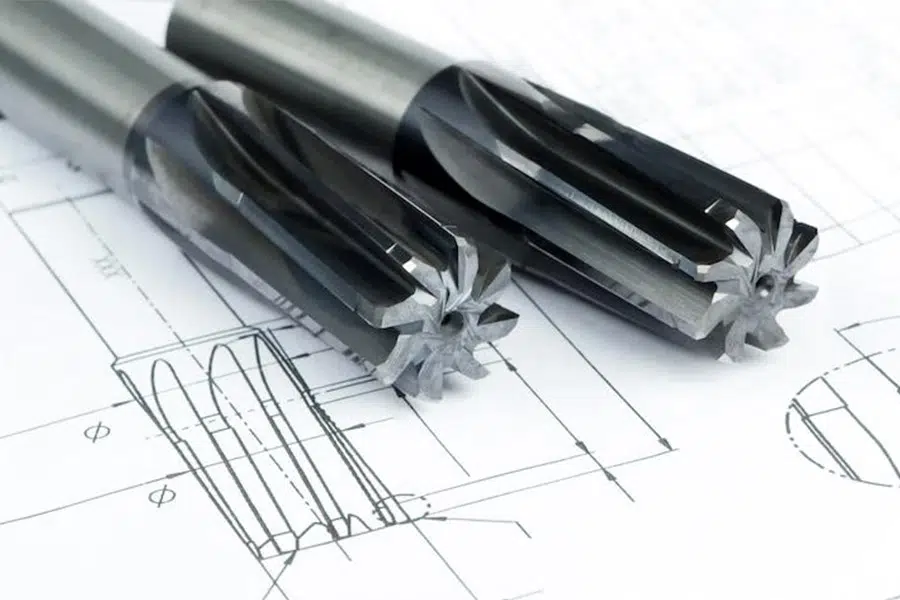
Type 1: Straight Flute Reamer
Straight Flute Reamer is a reamer with cutting edge parallel to the axis, with simple structure, mainly used for precision hole processing. It corrects the dimensional accuracy (IT6-IT8 grade) and surface roughness (Ra0.4-1.6μm) of pre-drilled holes through multi-edge symmetrical cutting, and is one of the most commonly used reamer types in machining.
1.Core features of straight groove reamer
Blade design:
- Straight cutting edge, no helix angle (helix angle = 0°)
- 4~8 symmetrically distributed cutting teeth to ensure balanced cutting force
Geometric parameters:
- Rake angle (γ): 6°~10° (high-speed steel) or 0°~6° (carbide)
- Back angle (α): 8°~12°, reduce friction
- Wiper blade length: about 1/3 of the cutter body, improve the finish of the hole wall
Structural advantages:
- Good rigidity: suitable for short hole processing, strong vibration resistance
- Strong versatility: can process common materials such as cast iron, carbon steel, aluminum alloy, etc.
2. Comparison of the advantages and disadvantages of straight groove reamer
✔ Advantages
- High rigidity: The straight edge structure has strong resistance to bending and deformation, suitable for high-precision processing.
- Easy to sharpen: The straight edge simplifies the re-sharpening process and has low maintenance costs.
- Good economic efficiency: The manufacturing cost is lower than that of the spiral groove reamer, suitable for mass production.
- Wide applicability: Both through holes and blind holes can be processed, especially suitable for brittle materials such as cast iron.
✖ Disadvantages
- Poor chip removal ability: Chips are easy to accumulate, and chips may be stuck during deep hole processing (L/D>3 should be used with caution).
- High cutting resistance: Compared with the spiral groove reamer, the feed force is about 15%~20% higher.
- Limited surface quality: It is easy to produce built-up edge for sticky materials (such as aluminum and stainless steel), and the Ra value is difficult to be lower than 0.8μm.
4. Typical application scenarios of straight groove reamer
Industry application
- Automobile manufacturing: engine cylinder block positioning hole, gearbox bearing hole
- Mold processing: finishing of guide pin hole and ejector hole
- Hydraulic components: final finishing of valve block oil channel hole
Applicable materials
| Material type | Recommended cutting parameters (HSS reamer) |
|---|---|
| Cast iron | Speed 15-25m/min, feed 0.2mm/rev |
| Carbon steel | Speed 10-20m/min, feed 0.15mm/rev |
| Aluminum alloy | Speed 30-50m/min, feed 0.3mm/rev |
Type 2: Spiral flute reamer
The spiral flute reamer is a precision hole processing tool with a spiral cutting edge. The spiral flute design achieves continuous cutting and smooth chip removal, and is particularly suitable for deep holes, high-precision and difficult-to-process materials. Its processing accuracy can reach IT6-IT7 level, and the surface roughness is Ra0.4-0.8μm. It is an upgraded version of the straight flute reamer.
1. Core features of spiral flute reamer
Spiral blade design:
- The helix angle is usually 15°~45° (left or right), right is more common
- The spiral flute continuously guides the chip discharge to avoid blockage
Geometric parameter optimization:
- Rake angle (γ): 8°~15° (sharper than straight flute reamer)
- Back angle (α): 8°~12°, reducing back blade friction
- Unequal tooth pitch: Some high-end designs use it to further reduce vibration
Performance advantages:
- Extremely strong chip removal ability: suitable for deep holes (L/D>5) and sticky materials
- Smooth cutting: The helix angle disperses the cutting force and reduces the risk of vibration
- High surface quality: continuous cutting to avoid residual tool marks
3. Comparison of advantages and disadvantages of spiral flute reamer
✔ Advantages
- Excellent chip removal performance: The spiral flute pushes the chips actively like a “screw”, and deep hole processing does not get stuck
- Low cutting resistance: Compared with the straight groove reamer, the feed force is reduced by 20%~30%, which prolongs the tool life.
- High surface quality: Suitable for materials that are easy to stick to the tool, such as stainless steel and aluminum alloy, and the Ra value is stable below 0.4μm.
- Adapt to complex working conditions: Intermittent cutting (such as cross holes) performs well.
✖ Disadvantages
- High manufacturing cost: The spiral flute processing technology is complicated, and the price is 30%~50% higher than the straight flute reamer.
- Slightly weak rigidity: The bending strength of the spiral structure is slightly lower than that of the straight flute, and it is not suitable for ultra-high hardness materials (such as hardened steel).
- Difficulty in grinding: Special fixtures are required to ensure the consistency of the helix angle, and ordinary grinders are difficult to operate.
4. Typical application scenarios of spiral flute reamer
Industry application
- Aerospace: Deep hole processing of titanium alloy engine housing
- Medical equipment: Precision hole reaming of stainless steel bone screws
- Automobile manufacturing: Finishing of oil channel holes of aluminum alloy cylinder head
Applicable materials and parameters
| Material type | Recommended helix angle | Cutting speed (carbide) | Feed rate |
|---|---|---|---|
| Stainless steel | 25°~35° | 20~40m/min | 0.05~0.15mm/rev |
| Aluminum alloy | 30°~45° | 50~80m/min | 0.2~0.4mm/rev |
| Titanium alloy | 15°~25°(left-handed) | 15~30m/min | 0.03~0.1mm/rev |
Type 3: Adjustable reamer
Adjustable reamer is a precision hole processing tool with fine-tunable blade diameter. The cutting edge position is adjusted through a mechanical structure to meet the needs of processing various hole diameters with a single tool. Its adjustment range is usually ±0.1-0.5mm, and the accuracy can reach IT7-IT8 level. It is an ideal choice for maintenance processing and small batch production.
1. Core features of adjustable reamer
Adjustable structure design:
- The tool body adopts wedge-shaped slider or thread adjustment mechanism
- Adjustment accuracy reaches 0.01mm level, with scale indication
Blade configuration:
- Replaceable carbide or high-speed steel blades
- 6-8 cutting edges evenly distributed
Special advantages:
- One tool for multiple uses: covering 3-5 standard aperture sizes
- Strong economy: reducing tool inventory costs
3. Comparison of the advantages and disadvantages of adjustable reamers
✔ Outstanding advantages
- Wide adaptability of apertures: a single tool can replace multiple fixed reamers
- Wear compensation: restore tool size accuracy through adjustment
- Emergency maintenance: quick on-site adjustment to meet sudden needs
- Cost-effectiveness: long-term use can reduce tool costs by 30%
✖ Usage limitations
- Weak rigidity: the adjustment structure causes the overall rigidity to decrease by about 15%
- Upper limit of accuracy: only up to IT7 level (fixed reamers can reach IT6)
- Adjustment time: each adjustment requires 5-10 minutes of calibration
- Unsuitable scenarios: high-speed processing (>50m/min) or mass production
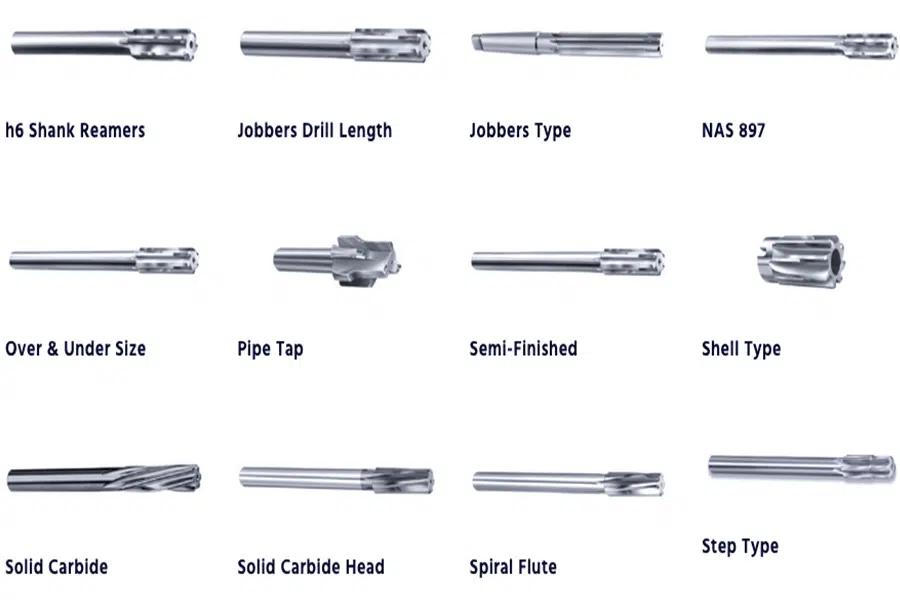
4. Typical application scenarios of adjustable reamer
Best application areas
- Equipment maintenance: On-site correction of worn bearing seat holes
- Single-piece production: Trial parts, prototype processing
- Teaching and training: Practical courses for mechanical students
- Emergency processing: Alternative solutions when there is no fixed reamer of suitable specifications
Recommended processing parameters
| Material type | Adjustment range | Cutting speed | Feed rate |
|---|---|---|---|
| Cast iron | ±0.3mm | 12-18m/min | 0.15-0.25mm/rev |
| Carbon steel | ±0.2mm | 10-15m/min | 0.1-0.2mm/rev |
| Aluminum alloy | ±0.4mm | 25-40m/min | 0.2-0.3mm/rev |
Type 4:Taper reamer
Taper reamer is a tool specially used for machining tapered holes. Its cutting edge is tapered and can machine standard tapers (such as Morse taper, metric taper) or customized tapers. It is characterized by two steps: rough reaming and fine reaming. Rough reamer has deep tooth grooves and large chip space, while fine reamer has more teeth and high surface finish. It can be classified into fixed taper reamers (such as 1:10, 1:20) and adjustable taper reamers, which are suitable for machining precision taper holes such as machine tool spindle holes and valve sealing surfaces.
Type 5:Carbide reamer
Carbide reamer uses tungsten-cobalt (YG) or tungsten-titanium-cobalt (YT) alloy as the cutting part. It has extremely high wear resistance and high temperature resistance (up to 800°C or above), and is suitable for processing high-hardness materials. It is characterized by long life (5-10 times higher than high-speed steel reamer), but it is more brittle and needs to be used with coolant. It is mainly used for high-precision hole processing of difficult-to-process materials such as hardened steel, stainless steel, cast iron, such as automobile engine cylinder blocks, aerospace structural parts, etc.
Type 6:Coated reamer
Coated reamer is a reamer with wear-resistant coatings such as TiN, TiAlN or DLC on the surface of the cutter body, which can significantly improve cutting performance. It is characterized by low friction coefficient, strong anti-adhesion, and excellent high temperature resistance (TiAlN coating is heat resistant up to 900℃). The advantage is that it can extend the tool life by 50%-200% and support high-speed dry cutting, especially suitable for precision machining of materials that are easy to stick to the tool, such as stainless steel and aluminum alloy.
Type 7:Machine reamer
Machine reamer is designed for machine tools (such as lathes and machining centers) and relies on machine tool power to rotate. It is characterized by high cutting efficiency, strong shank rigidity, and usually with coolant channels. Its shank types include straight shank (suitable for small diameters ≤16mm), tapered shank (Mohs taper, for large diameters) and sleeve shank (modular installation), which are widely used in high-precision hole machining in mass production.
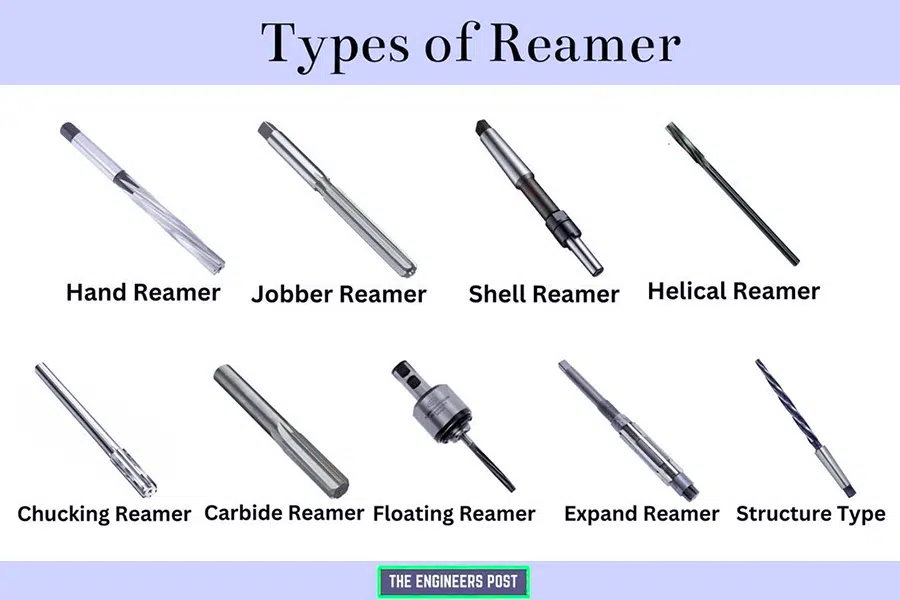
Type 8: Hand reamer
Hand reamer is operated by a manual wrench and is suitable for small batches or maintenance scenarios. It is characterized by a small cutting cone angle (1°-3°), unequal tooth pitch (to reduce vibration), and a square handle for easy clamping. Its processing accuracy depends on operating skills and is often used for single-piece repair and assembly site hole finishing, such as bearing seat holes, pin holes, etc.
Type 9: Step reamer
The step reamer adopts a segmented design and can process multiple apertures or step holes at one time. It is characterized by a multi-stage cutting edge structure to reduce the number of tool changes. Its advantage is to ensure the coaxiality of each step hole and improve processing efficiency. Typical applications include hydraulic valve blocks, multi-stage pump bodies and other complex hole system processing.
Type 10: Hole reamer
Hole reamer is used to enlarge pre-drilled holes and improve precision. Its cutting volume is between that of drill bits and ordinary reamers, and it has good guiding properties and can correct hole deflection. It is mainly used for semi-finishing of pre-holes in castings and forgings, or to replace rough reaming processes, and is especially suitable for repairing holes with uneven allowances.
Type 11: Diamond reamer
Diamond reamer uses diamond particles as cutting edges and is suitable for processing super-hard and brittle materials. It is characterized by extremely high hardness and excellent wear resistance, and can achieve a surface roughness of Ra0.1μm. It is mainly used for precision hole processing of materials such as ceramics, optical glass, and tungsten carbide, or high-precision hole repair of hydraulic valve blocks.
Type 12: Extrusion reamer
Extrusion reamer processes the hole wall through plastic deformation rather than cutting. It is characterized by smooth cutting edge, no chip generation, and small machining allowance (0.05-0.2mm). Its advantages are hardening of the hole wall surface, improved wear resistance, and no burrs. It is particularly suitable for precision hole processing of thin-walled parts and soft metals (such as copper and aluminum).
Type 13:Gun drill reamer
Gun drill reamer combines deep hole drilling and reaming functions. It is specially used for deep hole processing with aspect ratio>10. It is characterized by internal cooling channels and guide blocks to ensure smooth chip removal and reduce runout. Typical applications include fine processing of deep holes such as cylinder holes, gun barrels, and hydraulic valve stems.
Type 14: Modular reamer
The modular reamer adopts a detachable design of the cutter head and the handle. It is characterized by strong flexibility and can quickly replace the cutter head of different diameters or materials. Its advantage is to reduce the inventory cost of tools and adapt to the small batch production of multiple varieties, such as the rapid changeover requirements in the processing of automotive parts.
How to choose the right reamer?
In machining, the choice of reamer directly affects the hole accuracy (IT6-IT8), surface roughness (Ra0.4-3.2μm) and machining efficiency. Wrong selection may shorten the tool life by 70% or cause the hole diameter to be out of tolerance! LS will help you accurately match the best reamer through scientific selection methods + practical cases.
1. Select the reamer according to the processing material
Processing of ordinary steel
- Recommended reamers: HSS coated reamers (TiN/TiAlN coated)
- Advantages: cost-effective, suitable for carbon steel and alloy steel below HRC30
- Alternative: Tungsten carbide reamer (in the case of high machining volume)
Machining hardened steel/heat-resistant alloys
- Required reamer: Tungsten carbide reamer (YG8/YG6X)
- Key parameters: It needs to be used with high-pressure coolant
- Contraindications: Avoid the use of high-speed steel reamers
Machining aluminum/copper alloys
- The best option: diamond-coated reamers or extrusion reamers
- Reason: Prevent the material from sticking to the knife and ensure the finish of Ra0.4μm or less
Machining cast iron
- Economy Solution: Uncoated Carbide Reamer (YG Type)
- Specialized solution: CBN-coated reamers (high-volume machining)
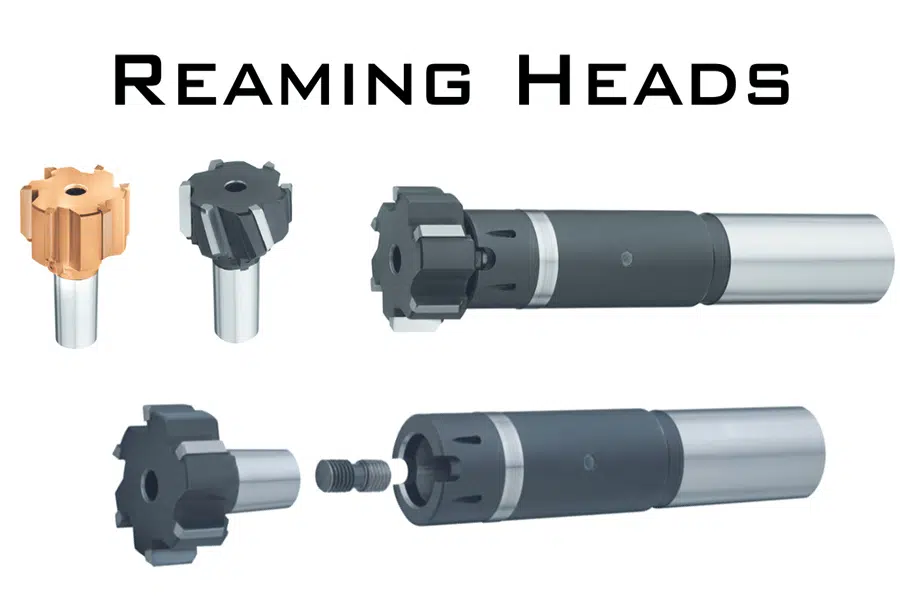
2. Choose according to the processing accuracy requirements
| Accuracy level | Recommended reamer type | Achievable accuracy |
|---|---|---|
| IT6-IT7 | Machine carbide reamer | ±0.01mm |
| IT7-IT8 | Coated high-speed steel reamer | ±0.02mm |
| IT8 and below | Hand reamer | ±0.05mm |
| Ultra precision | Diamond reamer | ±0.002mm |
Solutions for special requirements:
- Taper hole processing: taper reamer must be used (coarse and fine reaming as a set)
- Step hole: step reamer is formed in one step
- Deep hole (L/D>10): gun drill reamer with high-pressure cooling
3. Choose according to production batch
Single piece/maintenance work
- Hand reamer: flexible and controllable
- Adjustable reamer: adapt to different hole diameters
Small and medium batches (100-1000 pieces)
- Machine high-speed steel reamer: economical and affordable
- Modular reamer: fast changeover
Large batch production (1000+ pieces)
- Carbide reamer: long life
- Coated reamer: reduce the number of tool changes
4. Solutions for special working conditions
Thin-walled parts processing
- Extrusion reamer: no cutting force deformation
- Taboo: avoid using conventional reamer
Correction of existing deflected holes
- Expansion reamer: correction with guide part
- Key skills: small margin correction first (0.1mm)
Composite material processing
- Diamond reamer: for abrasive materials
- PCD reamer: for carbon fiber
3 typical selection errors and correction solutions
Error 1: Machining stainless steel with a straight groove reamer
❌ Consequence: Built-up edge causes the hole diameter to be reduced by 0.01-0.03mm
✅ Correction: Use a TiAlN coated reamer with a helix angle of 35°
Error 2: High-speed machining of cast iron with a carbide reamer
❌ Consequence: Cutting edge chipping (abrasive wear of cast iron chips)
✅ Correction: Reduce speed to 20m/min and use CVD coating
Error 3: Using a hand reamer on a CNC
❌ Consequence: Radial runout > 0.02mm, and the hole is polygonal
✅ Correction: Replace the machine with a reamer and clamp the hydraulic toolholder
Conclusion
The 14 types of reamers in machining have their own characteristics and are suitable for different machining needs: straight flute reamers have good rigidity but poor chip removal, which is suitable for short hole machining; Spiral flute reamer for smooth chip evacuation, suitable for deep holes and viscous materials; Adjustable reamer for fine adjustment of hole size, suitable for repair and small batch production; Taper reamers are used for taper machining; Tungsten carbide reamers are wear-resistant and high-temperature resistant, suitable for difficult-to-machine materials; Coated reamers for extended life and suitable for high hardness materials; Machine reamers are used for CNC high-efficiency machining, while hand reamers are suitable for precision hole trimming; The stepped reamer can form the stepped hole at one time; The reaming reamer has the function of drilling and reaming; Diamond reamers are used for superhard materials; The squeeze reamer improves the finish by cold extrusion; Gun drill reamers specialize in deep hole processing; Modular reamers offer flexibility and cost advantages. Together, these reamers cover a wide range of requirements from conventional to high-precision, from simple to complex working conditions, significantly improving machining efficiency and quality.
📞 Phone: +86 185 6675 9667
📧 Email: info@longshengmfg.com
🌐 Website: https://www.longshengmfg.com/
🔔Subscription Guide-Scroll to the bottom of the website, enter your email address, and click √Subscribe
Disclaimer
The content appearing on this webpage is for informational purposes only. LS makes no representation or warranty of any kind, be it expressed or implied, as to the accuracy, completeness, or validity of the information. Any performance parameters, geometric tolerances, specific design features, quality and types of materials, or processes should not be inferred to represent what will be delivered by third-party suppliers or manufacturers through LS’s network. Buyers seeking quotes for parts are responsible for defining the specific requirements for those parts. Please contact to our for more information.
Team LS
This article was written by various LS contributors. LS is a leading resource on manufacturing with CNC machining, sheet metal fabrication, 3D printing, injection molding,metal stamping and more.

FAQs
What are the different types of reamers?
There are 14 types of reamers, including straight groove reamers (suitable for short hole processing), spiral groove reamers (special for deep holes and viscous materials), adjustable reamers (hole diameter can be fine-tuned), taper reamers (for machining taper holes), cemented carbide reamers (wear-resistant and high-temperature resistant), coated reamers (for extended life), machine reamers (for CNC), hand reamers (manual hole trimming), stepped reamers (multi-stage hole diameter for one-time processing), extrusion reamers (chipless cold extrusion), etc., to meet the needs of different materials, precision and working conditions.
What is a Reamer Tool?
The reamer is a multi-edge cutting tool for hole finishing, which corrects the hole to high precision (IT6-IT8 grade) and low roughness (Ra0.4-3.2μm) by performing micro-cutting (allowance 0.1-0.5mm) of pre-drilled holes, and its core function is to improve the dimensional accuracy, roundness and surface finish of the hole, which is widely used in precision manufacturing fields such as automobiles and aviation.
What material is a machine reamer made of?
Machine reamers are mainly made of high-speed steel (such as M2, M35) or cemented carbide (such as YG8, YT15), and TiN/TiAlN coating will be added to high-end models; Among them, high-speed steel is suitable for ordinary steel processing, cemented carbide is used for high-speed cutting or difficult-to-machine materials (such as quenched steel, titanium alloy), and some special reamers are processed with diamond coating (PCD) composite materials.
What is a CNC reamer?
CNC reamer is an automatic reamer specially designed for CNC machine tools, with high rigidity cutter body (radial runout<0.005mm), internal coolant hole (2-4 Φ1-1.5mm cooling channels) and precision shank (such as HSK, hydraulic tool holder), support high-speed cutting (carbide cutter up to 50-80m/min), through G code (such as G85 cycle) to achieve precise feeding, suitable for high-volume high-precision hole machining.



